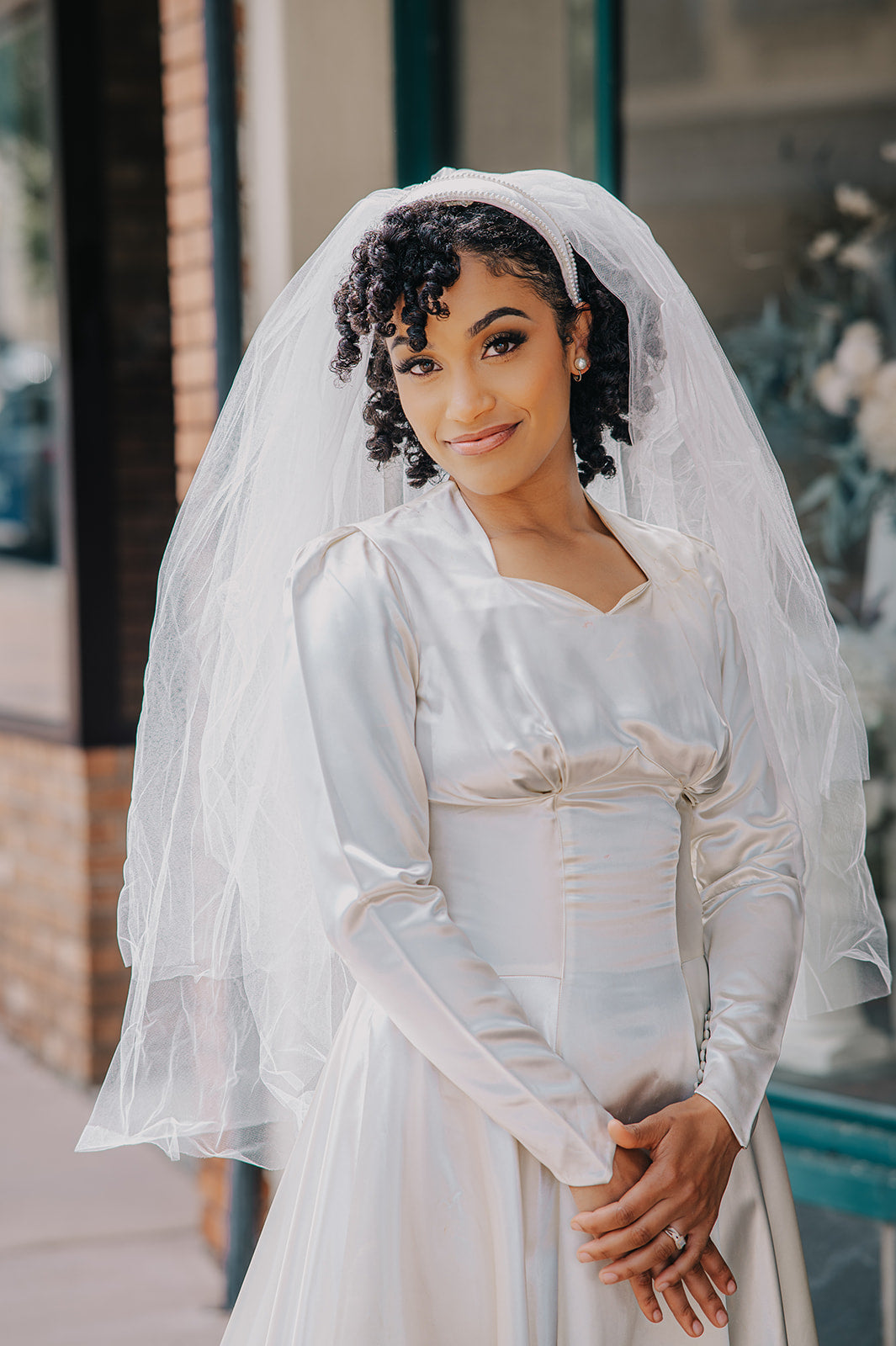How to Date Vintage Women’s Clothing: A Beginner's Guide
At 2 Earthy Mamas, we believe every vintage piece tells a story. Whether you’re a seasoned collector or a curious beginner, understanding how to date vintage women’s clothing can elevate your appreciation for the items you're scoring. Dating vintage women’s clothing isn’t just about knowing the era, it’s about connecting with the past and preserving the legacy of fashion.
Here are a few tips to help you uncover the history behind your vintage finds!

1. Start with Labels and Tags.
Labels are often the easiest way to determine a garment’s age. Here are a few things to look out for:
Union tags, such as those from the International Ladies' Garment Workers' Union (ILGWU), can indicate garments made between the 1930s and the 1980s. The design of these tags has changed a lot over time, which can provide clues to specific decades.
Researching a brand label's logo and font style can help narrow down a particular era. Many brands have updated their branding over the past few decades. Conduct some research to identify the era your garment is from.
Pay special attention to, or the lack of, care labels. Washing instruction labels became mandatory in the U.S. in 1971, so pieces without care labels are likely older than the 1970s.
2. Analyze the Fabric and Construction
Fabric types are one of the biggest giveaways. Synthetic fabrics like polyester and nylon became popular in the 1950s and 1960s. Pieces from even earlier decades often used natural fabrics like silk, wool, and cotton.
It is important to look into the construction details. Hand-sewn stitches and metal zippers suggest older garments, while plastic zippers and serged seams are signs of newer production.
3. Examine Styles and Silhouettes
Fashion trends evolve with the years, as do the shape of clothes. Understanding the decade’s trends can help you pinpoint a garment’s origins.
1920s: Drop-waist dresses and straight silhouettes.
1950s: Full skirts and nipped-in waists.
1970s: Flowing maxi dresses and bohemian styles.
4. Look at Buttons and Fastenings
Buttons, hooks, and closures have evolved over time. And if you look closely enough, they can help you identify a garment's age.
Pre-1940s: Bakelite and metal buttons were very common during this time.
1960s-1980s: Plastic buttons and Velcro became widespread
5. Research Patterns and Prints
1930s-1940s: Small florals and geometric prints were popular.
1960s: Bold, psychedelic patterns dominated.
1980s: Bright colors and graphic prints were all the rage.
6. Seek Help from Experts
Sometimes, dating a piece requires professional input. At 2 Earthy Mamas, we’re always happy to share our knowledge. Stop by our Danville store or message us on social media with your vintage finds, and we'll help you date your items.
Happy vintage hunting!
2 Earthy Mamas
Shop 2 Earthy Mamas
Explore our carefully curated vintage collection, where every item has a story to tell and carries its own bit of history. Whether you're seeking a classic garment or a standout accessory, our online store and in-store boutique have exactly what you need.
Shop online.
Shop in-store.
